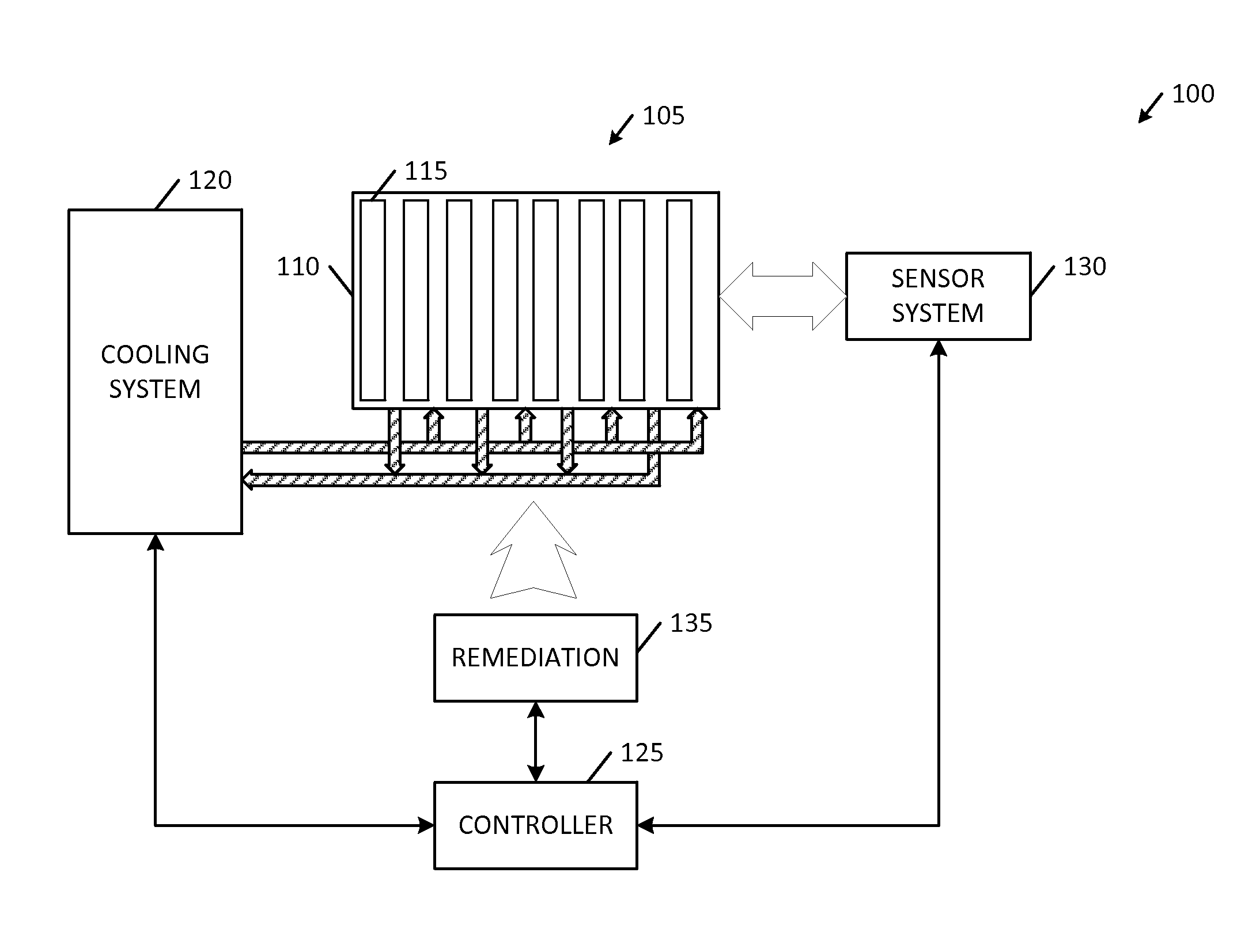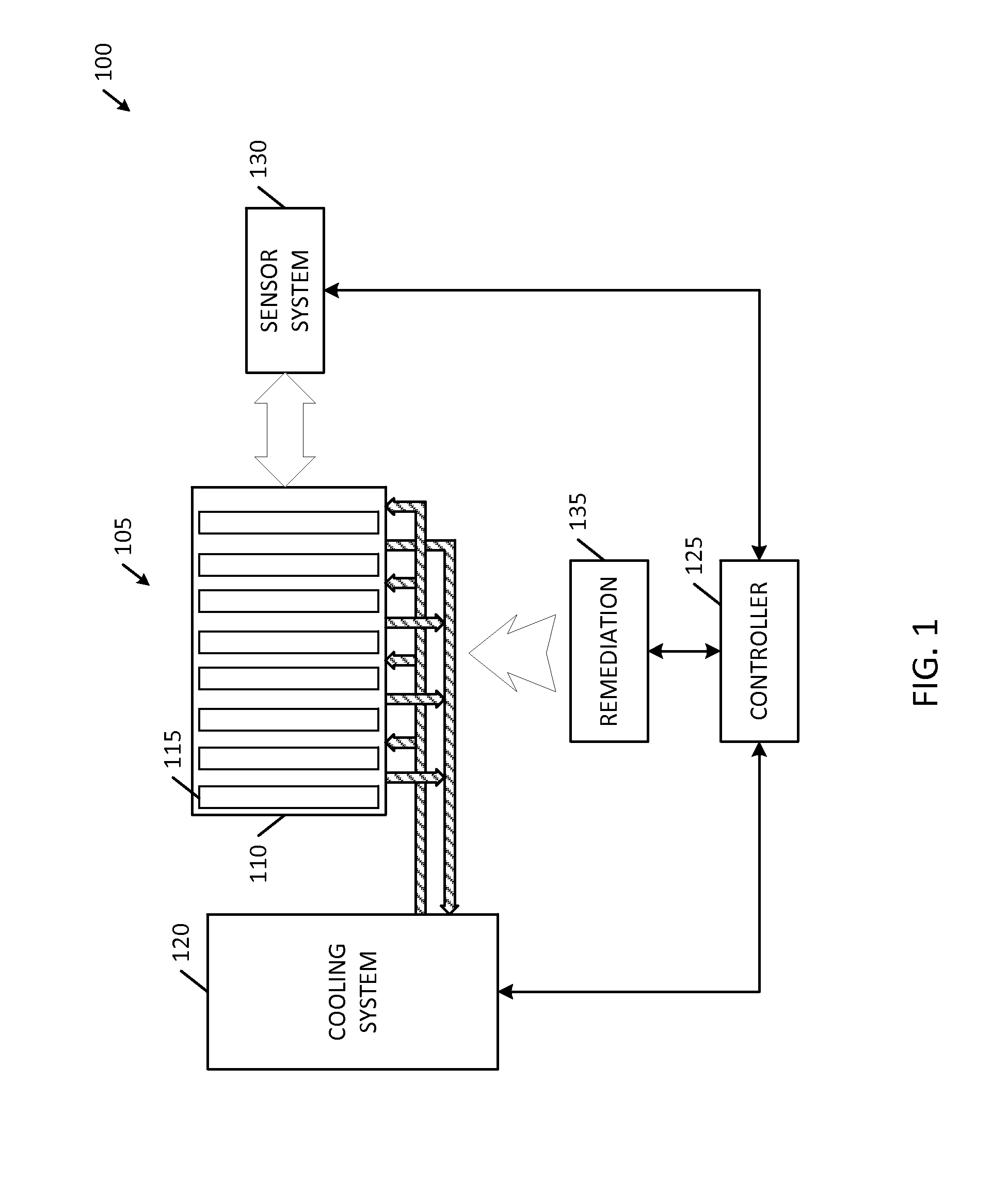Response to High Voltage Electrolysis of Coolant in a Battery Pack
a high-voltage electrolysis and battery pack technology, which is applied in the field of response to high-voltage electrolysis of coolant in battery pack enclosures, can solve the problems of local thermal condition transforming into runaway thermal condition, leakage, and coolant entering unintended parts of the enclosure, so as to reduce the electrolysis rate and hazard severity, and increase the amount of time to thermal runaway.
- Summary
- Abstract
- Description
- Claims
- Application Information
AI Technical Summary
Benefits of technology
Problems solved by technology
Method used
Image
Examples
Embodiment Construction
[0027]Embodiments of the present invention provide an apparatus and method providing for detecting and responding to high voltage electrolysis within an electric vehicle battery enclosure to limit possible excessive thermal condition of the individual battery cells and modules. The following description is presented to enable one of ordinary skill in the art to make and use the invention and is provided in the context of a patent application and its requirements.
[0028]Various modifications to the preferred embodiment and the generic principles and features described herein will be readily apparent to those skilled in the art. Thus, the present invention is not intended to be limited to the embodiment shown but is to be accorded the widest scope consistent with the principles and features described herein.
[0029]In the discussion herein regarding the preferred embodiments, a particular coolant mixture is contemplated to be used—namely a ethylene glycol / water mixture. More generically,...
PUM
 Login to View More
Login to View More Abstract
Description
Claims
Application Information
 Login to View More
Login to View More - R&D
- Intellectual Property
- Life Sciences
- Materials
- Tech Scout
- Unparalleled Data Quality
- Higher Quality Content
- 60% Fewer Hallucinations
Browse by: Latest US Patents, China's latest patents, Technical Efficacy Thesaurus, Application Domain, Technology Topic, Popular Technical Reports.
© 2025 PatSnap. All rights reserved.Legal|Privacy policy|Modern Slavery Act Transparency Statement|Sitemap|About US| Contact US: help@patsnap.com



